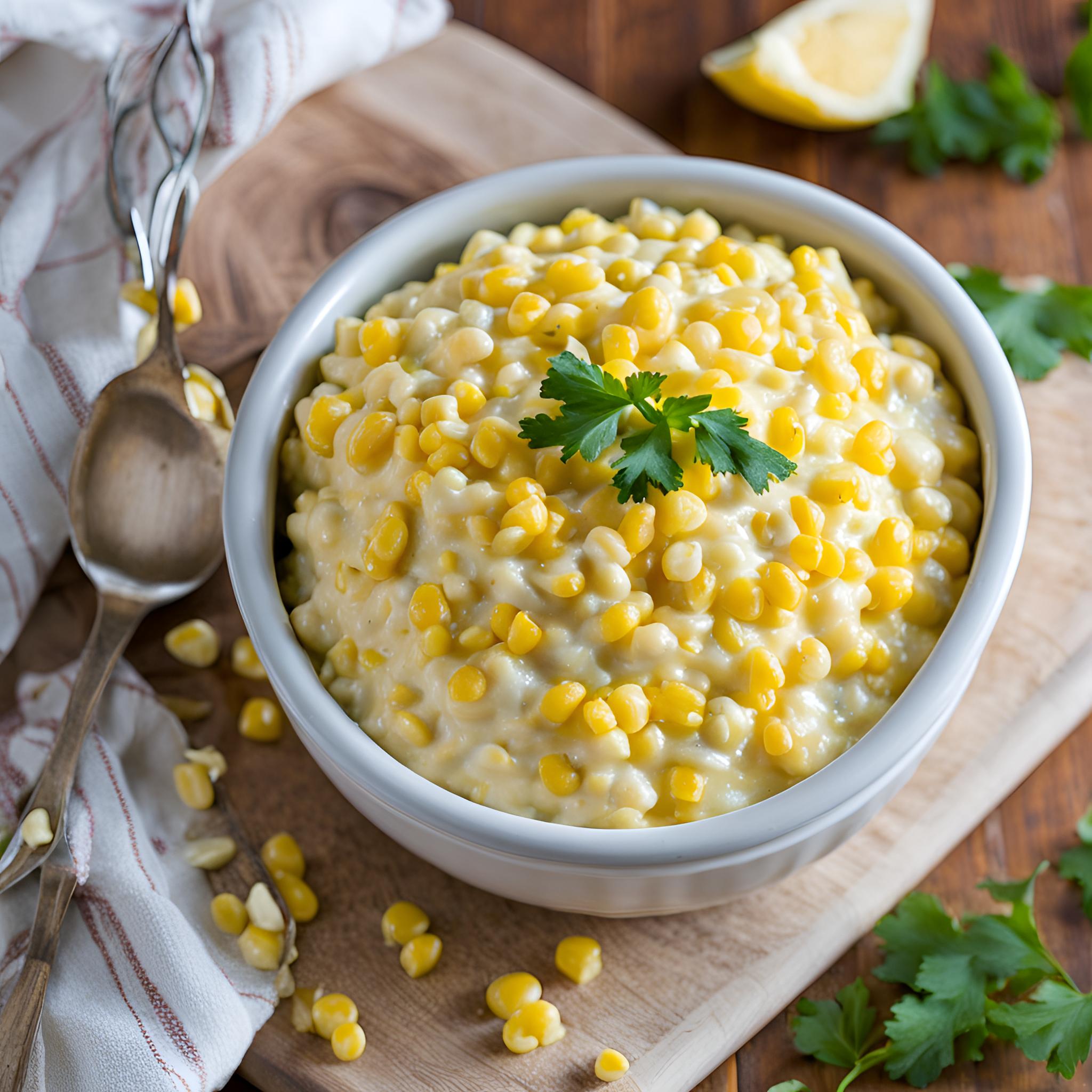Easy One Pot Jambalya with Creole Seasoning Recipe
When it comes to comfort food that’s packed with flavor, few dishes can compete with a hearty jambalaya.

This classic Creole dish, rooted in the rich culinary traditions of Louisiana, combines rice, vegetables, and meat—usually a mix of chicken, sausage, and shrimp—into one delicious, easy-to-make meal. With the added convenience of being cooked in a single pot, this jambalaya recipe is perfect for busy weeknights or for feeding a crowd.
This recipe not only simplifies the cooking process but also enhances the flavor with the use of Creole seasoning—a blend of herbs and spices that embodies the essence of Southern cooking. Whether you’re a seasoned cook or a kitchen novice, this one-pot jambalaya is sure to become a favorite in your household.
Why One-Pot Meals Are a Game-Changer
One-pot meals are beloved for their simplicity, minimal cleanup, and the way they allow flavors to meld together beautifully. Everything cooks in the same pot, so the rice absorbs all the rich flavors from the meats, vegetables, and seasonings. This method of cooking is ideal for jambalaya, as it allows all the ingredients to infuse with the robust Creole seasoning, resulting in a dish that’s deeply flavorful and satisfying.
The Origins of Jambalaya
Jambalaya has a storied history that reflects the diverse cultural influences of Louisiana. It’s a dish that brings together elements of Spanish paella, French cuisine, and African cooking traditions. The name “jambalaya” is believed to be derived from the Provençal word “jambalaia,” meaning a mix or mishmash, which is fitting given the variety of ingredients that can go into this dish. The dish can be broadly categorized into two types: Creole (or “red” jambalaya), which includes tomatoes, and Cajun (or “brown” jambalaya), which does not.
How to Make Easy One-Pot Jambalaya with Creole Seasoning
Step 1: Prepare the Ingredients
Start by gathering and prepping all your ingredients. Dice the chicken thighs into bite-sized pieces, slice the andouille sausage, and peel and devein the shrimp if necessary. Chop the onion, celery, and bell pepper, and mince the garlic.
Step 2: Brown the Meats
Heat a large, heavy-bottomed pot or Dutch oven over medium-high heat. Add a drizzle of oil and brown the chicken thighs on all sides. Once browned, remove the chicken from the pot and set it aside. In the same pot, add the sliced sausage and cook until it’s nicely browned and has released some of its fat. Remove the sausage and set it aside with the chicken.
Step 3: Sauté the Vegetables
In the same pot, add the chopped onion, celery, and bell pepper. Sauté until the vegetables are softened and starting to brown, about 5 minutes. Add the minced garlic and cook for another minute until fragrant.
Step 4: Add the Rice and Seasonings
Once the vegetables are sautéed, stir in the rice, allowing it to toast slightly in the pot for a minute or two. This helps to develop the flavor of the rice and ensures it absorbs the seasonings. Add the Creole seasoning, salt, pepper, and bay leaves, stirring to coat the rice and vegetables evenly.
Step 5: Add the Liquids and Proteins
Pour in the chicken broth and tomato sauce, stirring to combine. Return the browned chicken and sausage to the pot, along with any juices that have accumulated. Bring the mixture to a boil, then reduce the heat to low, cover the pot, and let it simmer for about 25 minutes.
Step 6: Add the Shrimp
After 25 minutes, remove the lid and stir in the shrimp. Continue to cook for another 5-7 minutes, or until the shrimp are pink and cooked through and the rice is tender.
Step 7: Let It Rest and Serve
Once the jambalaya is fully cooked, remove it from the heat and let it rest for about 5 minutes. This allows the flavors to meld together and makes it easier to serve. Remove the bay leaves and fluff the rice with a fork. Garnish with chopped parsley or green onions if desired, and serve hot.
Tips for Making the Best Jambalaya
Use a Heavy-Bottomed Pot
A heavy-bottomed pot, like a Dutch oven, ensures even cooking and prevents the rice from burning on the bottom. It also retains heat well, which is essential for cooking the jambalaya evenly.
Don’t Rush the Browning Process
Browning the chicken and sausage adds a depth of flavor to the jambalaya. Don’t rush this step—take the time to get a good sear on the meats before removing them from the pot.
Adjust the Spice Level
Creole seasoning can be spicy, so adjust the amount to your taste. If you like your jambalaya extra spicy, add more cayenne pepper or use a hotter version of andouille sausage.
Resting Time Is Important
Letting the jambalaya rest for a few minutes after cooking allows the rice to absorb any remaining liquid, resulting in a more cohesive dish.
Variations on Jambalaya
Jambalaya is a versatile dish that can be customized in many ways. Here are a few ideas to switch things up:
Seafood Jambalaya
For a seafood-focused jambalaya, skip the chicken and sausage and add a mix of seafood like crab, mussels, and crawfish along with the shrimp. Cook the seafood just until it’s done to avoid overcooking.
Vegetarian Jambalaya
For a meatless version, increase the amount of vegetables and add beans, such as red beans or black-eyed peas, for protein. Use vegetable broth instead of chicken broth.
Quinoa Jambalaya
For a healthier twist, substitute quinoa for the rice. Quinoa is a high-protein grain that cooks up fluffy and light, absorbing the flavors of the dish just like rice.
Brown Rice Jambalaya
For a whole-grain option, use brown rice instead of white rice. Keep in mind that brown rice takes longer to cook, so you’ll need to increase the simmering time by about 15-20 minutes.
Serving Suggestions for Jambalaya
Jambalaya is a complete meal on its own, but here are a few ideas for what to serve alongside it:
Cornbread
A slice of warm cornbread is the perfect accompaniment to jambalaya, soaking up all the delicious juices.
Green Salad
A fresh green salad with a tangy vinaigrette helps to cut through the richness of the jambalaya.
Collard Greens
Slow-cooked collard greens with a touch of vinegar provide a nice contrast to the spicy jambalaya.
French Bread
A crusty piece of French bread is great for sopping up any remaining sauce in your bowl.
Storing and Reheating Jambalaya
Storing Leftovers
Jambalaya stores well in the refrigerator for up to 3 days. Be sure to let it cool completely before transferring it to an airtight container.
Freezing Jambalaya
You can also freeze jambalaya for up to 3 months. Portion it out into freezer-safe containers or bags, and be sure to remove as much air as possible to prevent freezer burn.
Reheating Jambalaya
To reheat jambalaya, add a splash of chicken broth or water to help loosen the rice. You can reheat it in a pot on the stovetop over medium heat or in the microwave. Stir occasionally to ensure even heating.
Conclusion
This easy one-pot jambalaya with Creole seasoning is a perfect dish for those who crave bold, Southern flavors with minimal effort. It’s a dish that brings people together, whether for a weeknight family dinner or a gathering with friends. The combination of tender chicken, spicy sausage, succulent shrimp, and flavorful rice is truly irresistible. Plus, with just one pot to clean, you’ll have more time to enjoy your meal and less time spent washing dishes.
FAQs
Q1: Can I make this jambalaya in a slow cooker?
Yes, you can adapt this recipe for a slow cooker. Brown the meats and sauté the vegetables first, then add everything except the shrimp to the slow cooker. Cook on low for 4-6 hours, adding the shrimp in the last 15 minutes.
Q2: What’s the difference between Cajun and Creole jambalaya?
Cajun jambalaya typically does not include tomatoes, resulting in a “brown” jambalaya, while Creole jambalaya includes tomatoes, giving it a red hue.
Q3: Can I make jambalaya ahead of time?
Yes, jambalaya can be made ahead of time and reheated. In fact, the flavors often improve the next day.
Q4: Is jambalaya gluten-free?
Yes, this jambalaya recipe is naturally gluten-free. Just ensure that your sausage and broth are gluten-free as well.
Q5: How can I make my jambalaya less spicy?
To reduce the spice level, use less Creole seasoning or choose a milder sausage. You can also omit the cayenne pepper if you prefer a milder dish.
Easy One Pot Jambalya with Creole Seasoning Recipe

When it comes to comfort food that’s packed with flavor, few dishes can compete with a hearty jambalaya. This classic Creole dish, rooted in the rich culinary traditions of Louisiana, combines rice, vegetables, and meat—usually a mix of chicken, sausage, and shrimp—into one delicious, easy-to-make meal. With the added convenience of being cooked in a single pot, this jambalaya recipe is perfect for busy weeknights or for feeding a crowd.
Ingredients
- 3 tablespoons olive oil
- 1 pound boneless, skinless chicken thighs cut into bite-sized pieces
- 1 tablespoon Creole seasoning can sub Cajun seasoning
- 12 ounces andouille sausage sliced
- 1 medium white onion diced
- 1 large green bell pepper diced
- 2 ribs celery diced
- 6 cloves garlic minced
- 1 teaspoon dried oregano
- 3/4 teaspoon salt see notes below
- 2 large bay leaves
- 14 ounces tomato sauce
- 2 1/4 cups low-sodium chicken stock
- 1 1/2 cups long grain white rice
- 3 green onions minced
- 2 tablespoons flat-leaf parsley for garnishing
- For the shrimp
- 1/2 pound large shrimp
- 2 teaspoons Creole seasoning can sub Cajun seasoning
- 2 tablespoons olive oil
Instructions
Make the jambalaya
- Pat the chicken pieces very dry with paper towels and season with 1 tablespoon of the Creole seasoning.
- Heat a large Dutch oven to medium heat with the olive oil and add the chicken. Cook until browned on all sides then remove it to a plate with a slotted spoon. Add the Andouille and cook for a few minutes or until browned then remove to the same plate as the chicken and tent with foil to keep warm.
- Add the diced onion, peppers, and celery along with a pinch of salt and saute until soft (about 12-15 minutes). If the pot starts to burn add a few ounces of water to scrape up the browned bits. Add the garlic and cook for another 2 minutes or until fragrant.
- Add the rice and mix well to coat each kernel with the oil. Return the sausage and chicken to the pot and add the bay leaves, oregano, salt, tomato sauce, and chicken stock. Turn the heat to high and bring to a boil while scraping the bottom of the pot with a wooden spoon to dislodge any brown bits.
- Once boiling, turn the heat to low. With a wooden spoon make sure there is no sticking then cover with a lid. Cook the rice until just tender but not mushy (about 25 minutes). At the halfway point, quickly remove the lid and stir the rice so that there is no sticking. See notes below for oven method.
Meanwhile, cook the shrimp
- Season the shrimp with Creole seasoning.
- Heat a large pan to medium heat and add the olive oil. Once shimmering, add the shrimp and cook for roughly 1 minute per side or until the shrimp are almost cooked. Remove the shrimp from the pan to a plate and tent with foil.
- Once the rice is tender, uncover the pot and add the shrimp. Fluff the rice with a fork and top with green onion and parsley. Serve immediately. Enjoy!



